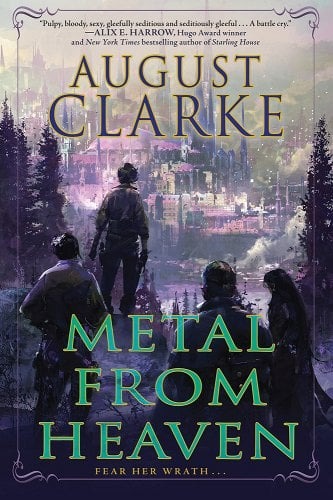Like many queer women, I’m sure, I have a strange relationship with the original Carmilla. On the one hand, sapphic vampires are objectively sexy. On the other hand, the way the danger she poses is framed as inextricably linked to her queerness (and her foreignness) is, well, unpleasant, to say the least. I always say that as a gothic-literature-loving lesbian, I love Carmilla, but it doesn’t love me back. Because of that, I am always on the lookout for good Carmilla retellings.
And I found one! S.T. Gibson’s An Education in Malice rectifies nearly all of my problems with the original, while also holding onto the things I do love about it. Set at a women’s college in the ‘60s, it frames Laura and Carmilla as rivals for their demanding poetry professor’s attention. As they are drawn further into their professor’s orbit, they grow closer, developing into true attraction for each other.
What I particularly enjoy about this book is the way it deals with corruption. The original Carmilla, of course, was meant to represent the supposed threat of queerness and foreignness to the purity of poor, innocent white girls like Laura. Here, Carmilla instead represents freedom, a safe(-ish) space for Laura to explore desires that were always there, always her own. While Laura has no experience with women before Carmilla, she knows from the beginning where her tastes lie, and every bit of intimacy between them is initiated by Laura.
Tangentially, I also appreciated that while there was still toxicity and obsession (I personally don’t go to a Carmilla retelling looking for an entirely wholesome and healthy story), it came from the professor, De Lafontaine, rather than Carmilla. While this plotline was uncomfortable to read (intentionally, to be clear), I thought it was handled sensitively, in addition to allowing for a healthier relationship between Carmilla and Laura while maintaining a similar atmosphere to the original.
For all of the story changes, however, the character Carmilla still felt like the original Carmilla, with all of her sharp angles and wild emotions (and copious uses of the word “languid”). Where Le Fanu’s Carmilla was written with fear and revulsion, though, Gibson’s was written with love. Laura is bolder here, more confident, but of course she is—her story here is of growing into herself, rather than being manipulated and drained.
I wouldn’t go so far as to say this was a perfect book, but as a retelling, I have no notes. In all honesty, a very small part of me is just a little bit mad this book exists, because it means that now I can’t write it. Most of me, though, is obviously very glad it exists because it means I can read it, and read it again.


